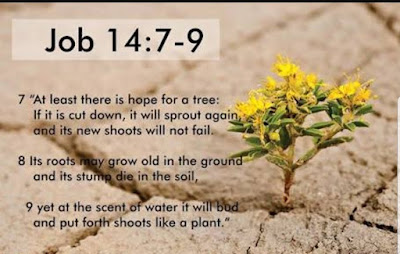
The scent of water in the air or that smell of ran in the air is not a whole lot of moisture. In reality it's nothing more than mere molecules unseen to the eye, yet easily detected by our sense of smell. The point is, it doesn't take much for us to detect water's presence air and that was the point of a new study on how plant rootsystems have the ability to locate where water is and grow their roots towards that higher source of water through sensing. Below is a study published back on June 9th 2014 which I read during my trip in California, on a plant root's ability to sniff out water where ever it may be found. Only now am I commenting on this phenomena. In so doing, the presence of water within any type of soil geology may actually influence the architectural pattern a tree develops for it's eventual mature rooting infrastructure. Understanding and developing appreciation for such plant mechanisms and the environmental triggers that influence their internal sensors which creates growth response even if we don't totally understand all the processes going on, allow us to plan and design our landscape and restoration projects for success. I'll have some examples of plants that made me curious about all of this at the end. Trees such as those in the Desert Mesquite pes family or even Poplar or Sycamore family are great choices for study as these trees are almost obsessed in their search for water. Understandable since they are a riparian water loving tree, even if it's 20'+ to 200'+ feet below the surface of a dry desert wash. If you’re a plant, [especially in dry locations like where I hail from] then finding and exploiting available water resources is pretty crucial to your existence.

Hence I've written previously about my own testing and playing with seed germination of desert plants such as Mesquite, Palo Verde and Acacia. But sometimes this can be tricky even for these desert dwellers. Localized water availability in soil can be highly variable depending on it's structure and climate, especially where I come from in the southwestern part of the USA, and those plants native to this region must gather water quickly and as efficiently as possible from the environment before putting on much top growth. They may remain small for some years before taking off like a rockrt upwards to 30' or 30' tall. The research in this article below finds that they have the ability to sniff it out water even when it is not immediately available to them. So how do they do it ? As with most of these research papers, much of it may be boring, but keep in mind that you don't have to understand the science of just how plants do this, you only need to be aware that they have this ability and this should influence you in the way you care for and maintain them. It also calls on you to train plant's roots for their future survivability in the landscape or in some remote backcountry out planting as with habitat restoration. The article was called:
"Water provides a Hydropatterning Blueprint for Rooting Architecture"
"Soil is a microscopic maze of nooks and crannies that hosts a wide array of life. Plants explore this environment by developing a complex branched network of roots that tap into scarce resources such as water and nutrients. How roots sense which regions of soil contain water and what effect this moisture has on the architecture of the root system has been unclear."
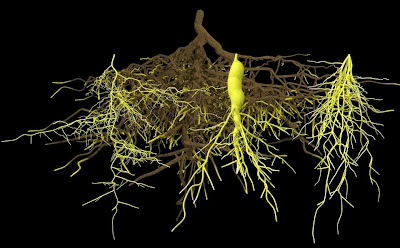 |
| Wissenschaft – Design – Animation |
"New research from a team led by Carnegie's José Dinneny focuses on how physical properties of a root's local environment control root branching and through which developmental pathways these signals act. Their findings, published by Proceedings of the National Academy of Sciences, describe a novel process called hydropatterning that allows plants to optimize root branching for water uptake."
 |
photo is credited to Pooja Aggarwal
Cross section of Rice root |
"Plant roots form a branching network like that above ground, with lateral roots growing out from a main axis. Because water is not uniformly distributed in soil, the structure of the root system networks needs to be regulated in ways that optimizes soil exploration, while limiting growth into water-poor regions."
"Dinneny and his team developed methods for growing roots in environments in which the distributions of water and air around the root were highly controlled. By analyzing the position where new branches formed, the researchers found that plants tend to place these root branches in close proximity to where water exists, while tiny root hairs appear in areas exposed to air."
 |
photo is credited to Neil Edwards II
This is a cross section of a maize root |
"Dinneny and his team developed methods for growing roots in environments in whiche the distributions of water and air around the root were highly controlled. By analyzing the position where new branches formed, the researchers found that plants tend to place these root branches in close proximity to where water exists, while tiny root hairs appear in areas exposed to air."
Their work revealed that opposite sides of the same single root are optimized to take advantage of air or water resources when the environment is varied. Working with colleagues Malcolm Bennett and Sacha Mooney at the University of Nottingham, micro-scale X-ray tomography was used to build 3-D models of roots growing in soil and revealed that similar processes occur in this more-natural environment.
"We had completely underestimated the spatial acuity of the patterning system in the root. It was fascinating to discover that roots can respond to environmental conditions that vary over distances as small as 100 microns, which is the size of a typical soil particle," said Dinneny."
The team named the new phenomenon hydropatterning and they observed it in several plant species, including the important crop plants maize and rice. The process is controlled by signaling pathways in the plant that are distinct from previously characterized drought responses suggesting that hydropatterning could be important for regulating root branching under non-stressful growth conditions.
"This simple observation opens up a whole new area of investigation for us," Dinneny said. "How plant cells distinguish between wet and dry environments is an important frontier that may lead to a better understanding of how plants efficiently use water."
(source)
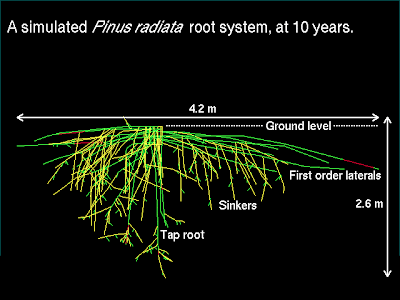 |
| Wissenschaft – Design – Animation |
"Using technology called x-ray microscale computed tomography to create 3D reconstructions of root architecture, researchers have been able to peer beneath the soil surface to see exactly what is going on. They find that plant roots are able to distinguish between water and air at extremely small scales – as little as a tenth of a millimetre – and that this is what determines the patterns of root branching along the main root axis; a process they term hydropatterning."
~~~~~~~~~~~~~~~~~~~~~~~~~~~~~~~~~~~~~~~~~~~
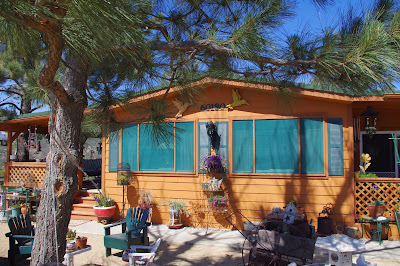 |
| My old place in Anza California |
Take special note of the Jeffrey Pine which you see here in front of the Mobile Home. Notice the pine tree's shadow on the ground and the silhouetted shadow outline of the cottonwood tree which is to it's left. This tree when it was around 12-15 foot tall in 1986 had one branch of it's root system grew clear around the right side of this mobile home the back of to a garden water hose spigot which was over 60+ foot away where there always was a constant leak dripping, which caused the immediate area of soil to remain damp. More details on this tree below.
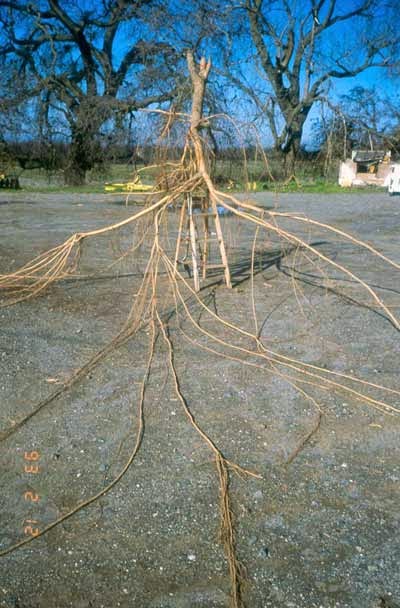 |
| riverpartners.org |
My best example of this plant water sniffing phenomena that actually got me to even consider what and how roots do what they do was when I first began to ponder just how a Cottonwood tree in my front yard managed to send forth a root system which made a beeline over 60+ feet away from the tree to the region where the utilities entered in the back along the side of my Mobile Home. This was back when I lived in Anza California at my new home which I purchased in June of 1985. This hybrid Cottonless Cottonwood in the front yard was only 10-12 foot tall, but was at least a few years old. The previous owner planted it in 1980 when he developed the site. The people were on and off weekenders and the cottonwood no doubt struggled a bit in the beginning. You should know however that the water facet for the hose bib had an ongoing dripping leak, so over time the immediate soil around the utility box was damp, but not necessarily wet. What alerted my attention to the root's presence was a sapling which sprouted out of the ground next to the faucet. I knew the tree was incapable of producing seed, so I dug down and sure enough hit the root. I did cut it way back, but it was always an ongoing issue the whole time I lived there every few years. Cottonwood roots are incredible as the picture from riverpartners.org reveals. This particular cottonwood was rescued after a flashflood in which five of the main branching roots were over 25 foot long.
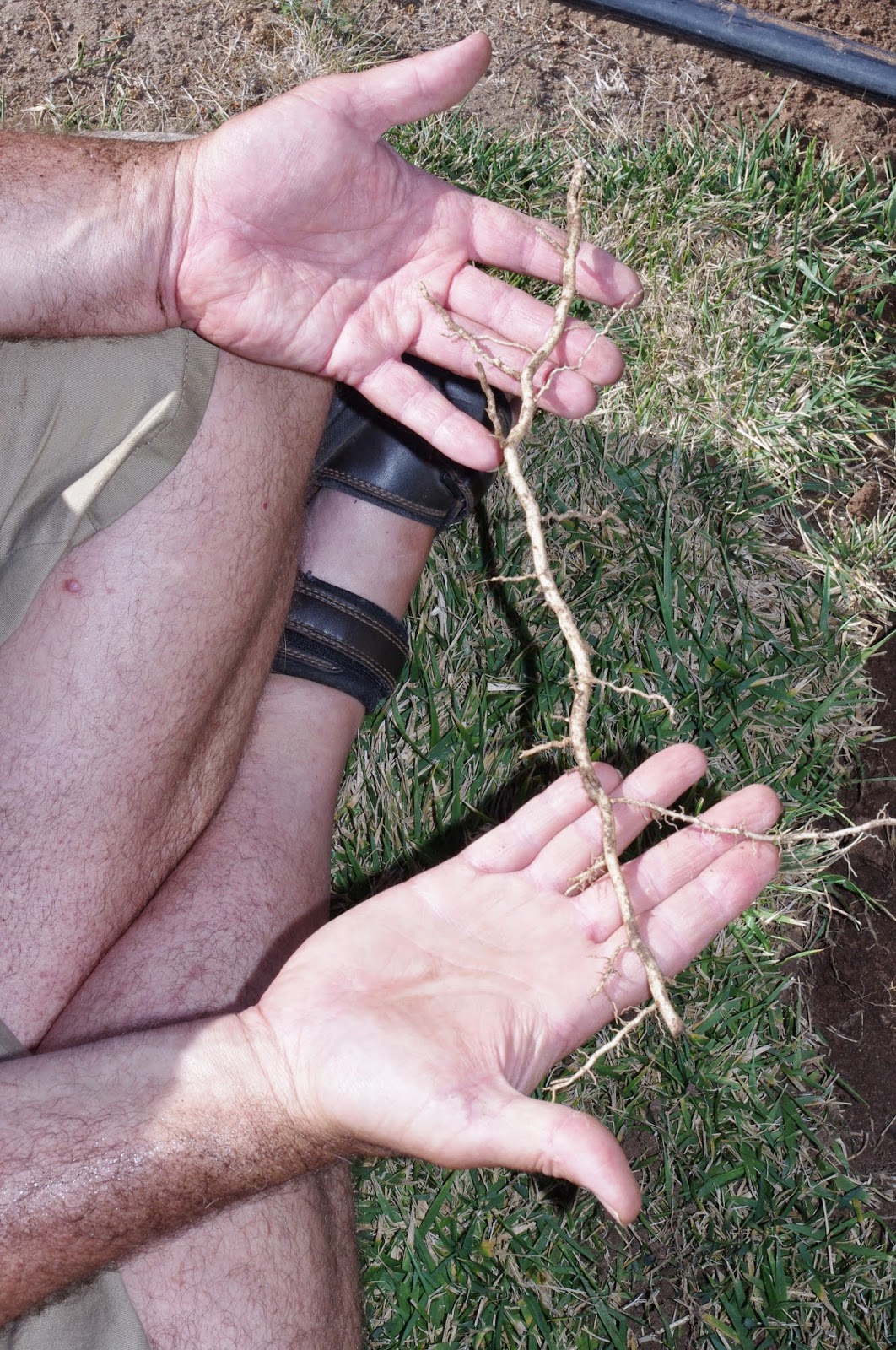
Previously I wrote about the roots of the native California Fan Palm in the deserts of Southeastern California. I had never given any consideration into palm tree rooting development, since I had always assumed as do most people that their roots are mostly fibrous roots as those of most grasses and probably don't stray far from the main region of the tree. I was wrong as I eyewitnessed California Fan Palm roots in one dry wash growing almost 25 foot away from one living tree where they had followed several cracks and fractures in the canyon wall bedrock. At my mother's place where I have partially removed some of her water sucking lawn, I stumbled upon Mexican Fan Palm roots 15 foot away from largest and only palm as you can see above left. I have since installed 4 other palms, both California and Mexican Fan Palm to create an Oasis effect around the already existing Baja Faiyduster, Pride of Barbados and Screwbean Mesquite. The lawn will be total history by next year. My post about my trip up to Mortero Palms Oasis and the pictures I took earlier in my trip near Ocotillo & to Torrey Pines State Reserve also brought incredible visual examples of just how natives seek out water by means of existing pathways provided by soil and bedrock structure this past May 2014 are here:
Getting to the Root of why Natives rule & Exotics struggle or outright fail
~~~~~~~~~~~~~~~~~~~~~~~~~~~~~~~~~~~~~~~~~~
Nitrogen-tracking tools for better crops and less pollution
Now notice what the researchers have also found out regarding the effects on plant root system growth and overall infrastructure when nitrogen is scare.
"Nobody knew the mechanisms of how low nitrogen affects plant roots,"
In their laboratory at Michigan Tech, Busov and Yordanov planted Poplar seedlings under normal nitrogen levels. Then they transplanted them to a medium that contained almost no nitrogen. What happened? Read the link below and my comments in conclusion below here.
MTU Scientists Get To The Root Of Poplar Tree Genes, Nutrient Efficiency
~~~~~~~~~~~~~~~~~~~~~~~~~~~~~~~~~~~~~~~~~~
Conclusions:
So exactly what do we gain and come away with here after reading both of these studies ? First, it isn't necessary to understand nor completely comprehend everything these researchers bring to our attention. These researchers live and speak in a world all their own with terminology loaded with intellect speak. To often this prevents the pursuit of biomimicry. In fact you should know that many biotechs like Monsanto, etc, while claiming to champion replicating what nature does, actually view nature as flawed, imperfect and a lousy designer. They believe that their collective genius can accomplish a far better product. But to the credit of these researchers and maybe the journalist who put things together, they used terms and illustrations which I believe actually help the average person understand from a design perspective with purpose and intend. Take the researcher who was looking for that gene he said would be the "high hieracrhical regulator" where he used the term "Boss Gene" which would control all function of rootsystem growth. Here's what came next:
“Imagine a manufacturer,” he said. “At the bottom of the hierarchy, you find the laborers. They answer to a foreman who reports to a manager, and so on until you get to the president. If you want multiple laborers to do a complicated job, you start with the president, who will pass the instructions down.”
“There is a master switch that turns on the engine. The engine activates other switches that make all the little cogs and gears in the machine do what they are supposed to do.”
So who uses such terms and illustrations ??? Someone who labels and recognizes the entire genome as he puts it, "a genetic engine." Someone who wish is to appeal to the average person and wishes to help them increase their personal knowledge of the natural world. Many of the gene switches and other nano-mechanisms they are looking into with their research and attempting to identify, they hope to manipulate and bypass the why and how nature works in the wild and create shortcuts mainly for profit. Okay, I get that. But still there is literally volumes invaluable information here which can actually help the home gardener, professional landscaper or habitat restorationist to grasp and get a healthy headstart on any project.
 |
| Hunter Industries |
 |
| nativerevegetation.org |
A newer interesting field in genetics is something called epigenetics or geneomic imprinting in which earlier researchers stumbled upon DNA as being more complex than ever religiously thought. Genes apparently have innumerable switches which can be turned on and off much like a light switch and these are what many are trying to identify and and manipulate, patent and turn into a new product for profit. For most of us here now, just knowing that they have discovered info on a plant's ability to sniff out water should tell us something about plant establishment and maintenance thereafter in the landscape, garden or habitat rehabilitation. As I've attempted over time to pound through everyone's skull the idea or concept of deep pipe irrigation. You have seen both the pics I'm referencing here, the one from Hunter Industries and the other which shows a home made device. Either will work. Plants need to be trained from youth to develop deeper roots where future subsoil water is going to allow them to mature, maintain and make a living the rest of their natural lives in your landscape. Most conventional practices have been ingrained into the average person by garden shows or advertising to water regularly and fertilize at time of planting and you should know that there are huge business reasons for them to market their products that way to you. Obviously as we've seen in both research studies above, there are clearly both scientific & natural reasons for not doing so. Fertilizing at time of planting is also another waste of time and as you've read above, does not encourage, promote nor facilitate root growth and development. However mycorrhizal inoculation at time of planting is a must and if some expert insists it's already there or everywhere somewhere in the air, run the other way. From my experience and recent trip, if things above ground are failing in Nature, it's a sure bet things aren't doing well under the soil. More on that later on a mycorrhizal article I'm writing and almost finished with.
Earth's Internet: "Deep Irrigation Methods for Training Deeper Rooting networks"
I've also got another post in which I'll deal with the reasons for not utilizing the conventional methods of watering not only your native plants, but also the conventional exotic plant stocks you've purchased from the conventional retail plant Nurseries. The problems are identical and also for the same health reasons. This topic was earlier posted in many places around the Net and discussed sometime back after the California Native Plant Society posted a link which warned folks about the dangers of summer watering natives, but as many complained, it was rather vague. It had good points, but yes it was vague about the technicalities of what goes on with the plants and why they die. (Article Here) Personally, having worked with both natives and exotics in SoCal for decades, for me the reasons are identical. Stay Tuned.
"We never know the worth of water till the well is dry"
Thomas Fuller, Gnomologia, 1732









No comments:
Post a Comment
Thanks for visiting and stopping by with your comments!
I will try to respond to each comment within a few days, though sometimes I take longer if I'm too busy which appears to be increasing.